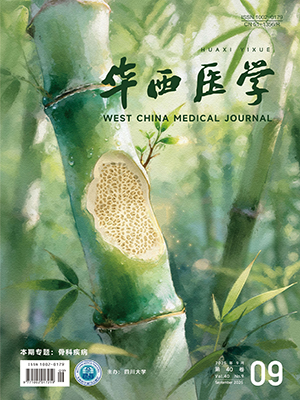| 1. |
Van Den Berghe G, Wouters P, Weekers F, et al. Intensive insulin therapy in critically ill patients. N Engl J Med, 2001, 345(19): 1359-1367.
|
| 2. |
Brunkhorst FM, Engel C, Bloos F, et al. Intensive insulin therapy and pentastarch resuscitation in severe sepsis. N Engl J Med, 2008, 358(2): 125-139.
|
| 3. |
Preiser JC, Devos P, Ruiz-Santana S, et al. A prospective randomised multi-centre controlled trial on tight glucose control by intensive insulin therapy in adult intensive care units: the Glucontrol study. Intensive Care Med, 2009, 35(10): 1738-1748.
|
| 4. |
Yamada T, Shojima N, Noma H, et al. Glycemic control, mortality, and hypoglycemia in critically ill patients: a systematic review and network meta-analysis of randomized controlled trials. Intensive Care Med, 2017, 43(1): 1-15.
|
| 5. |
Fu Y, Sun Y, Zhang J, et al. Intensive glucose control for critically ill patients: an updated meta-analysis. Endocr Connect, 2018, 7(12): 1288-1298.
|
| 6. |
Hermanides J, Vriesendorp TM, Bosman RJ, et al. Glucose variability is associated with intensive care unit mortality. Crit Care Med, 2010, 38(3): 838-842.
|
| 7. |
Egi M, Bellomo R, Reade MC. Is reducing variability of blood glucose the real but hidden target of intensive insulin therapy?. Crit Care, 2009, 13(2): 302.
|
| 8. |
Zhou Z, Sun B, Huang S, et al. Glycemic variability: adverse clinical outcomes and how to improve it?. Cardiovasc Diabetol, 2020, 19(1): 102.
|
| 9. |
Atamna A, Ayada G, Akirov A, et al. High blood glucose variability is associated with bacteremia and mortality in patients hospitalized with acute infection. QJM, 2019, 112(2): 101-106.
|
| 10. |
Akirov A, Diker-Cohen T, Masri-Iraqi H, et al. High glucose variability increases mortality risk in hospitalized patients. J Clin Endocrinol Metab, 2017, 102(7): 2230-2241.
|
| 11. |
Carvalho G, Lattermann R, Codere-Maruyama T, et al. Glucose and insulin administration while maintaining normoglycemia: the GIN concept. Minerva Anestesiol, 2013, 79(1): 74-82.
|
| 12. |
Sato H, Carvalho G, Sato T, et al. Perioperative tight glucose control with hyperinsulinemic-normoglycemic clamp technique in cardiac surgery. Nutrition, 2010, 26(11/12): 1122-1129.
|
| 13. |
Abd-Elsayed A, Mascha EJ, Yang D, et al. Hyperinsulinemic normoglycemia decreases glucose variability during cardiac surgery. J Anesth, 2017, 31(2): 185-192.
|
| 14. |
Sato H, Lattermann R, Carvalho G, et al. Perioperative glucose and insulin administration while maintaining normoglycemia (GIN therapy) in patients undergoing major liver resection. Anesth Analg, 2010, 110(6): 1711-1718.
|
| 15. |
Ryan EA, Shandro T, Green K, et al. Assessment of the severity of hypoglycemia and glycemic lability in type 1 diabetic subjects undergoing islet transplantation. Diabetes, 2004, 53(4): 955-962.
|
| 16. |
Blixt C, Larsson M, Isaksson B, et al. The effect of glucose control in liver surgery on glucose kinetics and insulin resistance. Clin Nutr, 2021, 40(7): 4526-4534.
|
| 17. |
谭惠文, 余叶蓉, 李秀钧. 正常血糖-高胰岛素钳夹技术在胰岛素制剂药物代谢动力学研究中的应用进展. 华西医学, 2017, 32(11): 1801-1804.
|
| 18. |
Duncan AE, Sessler D, Sato H, et al. Hyperinsulinemic normoglycemia during cardiac surgery reduces a composite of 30-day mortality and serious in-hospital complications: a randomized clinical trial. Anesthesiology, 2018, 128(6): 1125-1139.
|
| 19. |
Action to Control Cardiovascular Risk in Diabetes Study Group, Gerstein HC, Miller ME, et al. Effects of intensive glucose lowering in type 2 diabetes. N Engl J Med, 2008, 358(24): 2545-2559.
|
| 20. |
Gunst J, De Bruyn A, Van den Berghe G. Glucose control in the ICU. Curr Opin Anaesthesiol, 2019, 32(2): 156-162.
|




